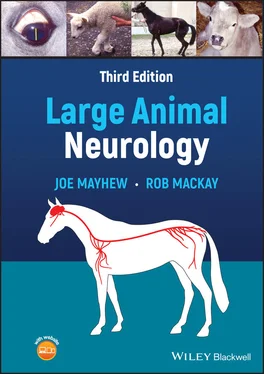Table 2.1 The following tests and criteria can be evaluated in a physical examination to assist in the detection of a neurologic disorder
| Mental attitude/awareness |
Symmetry of neck, trunk, and limbs |
| Normal behavior patterns |
Tail and anal tone |
| Menace tests |
Anal reflex |
| Pupillary light reflexes |
Rectal examination |
| Fundoscopic examination |
Postures adopted at rest |
| Symmetry of parts of the head |
Proximal limb muscle bulk |
| Tongue position and tone |
Gait at walk and trot |
| Absence of nasal discharge |
Gait while turning |
| External thoracolaryngeal (slap) reflex |
Faster gaits |
The age, breed, sex, use, and value of a patient all are important considerations in the diagnosis and prognosis of many neurologic conditions. Several diseases are age‐dependent. Certain diseases are associated with breed (see Chapter 31). Only a few neurologic diseases depend upon sex. The uses to which animals are put can be associated with certain diseases, and this impacts considerably on the prognosis that accompanies the diagnosis. Because many large animals are kept for economic purposes, the value of the patient must always be kept in mind with respect to time spent on evaluation, cost of therapy, and future productivity; the survival and productivity of any herd mates must also be considered.
In addition to taking a general history of the patient, questioning of the client should focus on the primary complaint. Information concerning the precise circumstances of the environment, other animal contacts, and the nature of the first signs observed ought to be sought first. Further questioning is aimed at defining a relationship between the severity of the syndrome and the passage of time—the sign:time graph.
Most congenital and familial diseases begin early in life, and signs usually progress relentlessly. Even structural neuraxial malformations, such as myelodysplasia, will frequently show progressive signs as the patient matures and ages. Syndromes resulting from physical causes, particularly external injury, have a sudden onset and after days then often stabilize or improve. Signs caused by infectious agents can be acute or chronic, and frequently fluctuate in severity. Immune‐mediated diseases often result in fulminant signs that can improve dramatically, particularly with therapy. Progression of metabolic, toxic, and nutritional disorders, which are usually symmetric, is very variable. Perhaps surprisingly, signs due to neoplastic involvement of the nervous system may begin abruptly and even wax and wane, but most often are progressive.
Historical data can give clues as to how widespread, focal, or multifocal the disease process is, whether there was evidence of asymmetry, and how severe the signs have been. These aspects of the pathogenesis of diseases are obviously helpful in determining the cause.
Procedure for the neurologic examination
The primary aim of a neurologic examination is to confirm whether a neurologic abnormality exists. Because omission of parts is the most common mistake made during the neurologic examination, the order in which the examination is performed becomes important. Here, we provide a precise practical format that is logical in sequence, easy to remember with practice, and emphasizes the need for an anatomic diagnosis ( Where is the lesion? ) to be made before an etiologic diagnosis ( What is the cause of the condition? ) is made. The rationale for the sequence of the examination presented here is as follows: first, it starts at the head and proceeds caudally to the tail; second, it is used for patients of all sizes and species, whether the patient is ambulatory or recumbent; third, it considers the anatomic location of lesions as the examination proceeds. Even if parts of the examination must be omitted because of the nature of the patient, suspicion of fracture, or financial constraints, the sequence ought to be followed mentally. Frequently, the presence of a neurologic lesion(s) cannot be deduced until the end of a thorough neurologic examination.
In practice, some experienced neurologists will undertake a preliminary examination along these lines and then perform a more detailed and focused study of the patient to help rule in and rule out involvement of the various parts of the nervous system. The nature of the latter will be based upon findings from the primary examination, from aspects of the examination that were overlooked or were uncertain, and from the history. During this focused assessment, it is just as important to rule out involvement of certain regions of the nervous system — e.g., forebrain, cervical spinal cord — as it is to define those components that are likely affected.
An outline of the recommended format for the neurologic examination of large animals, based on the evaluation of the adult horse, is given in Table 2.2, along with a summative description of the evaluation of cranial nerve function in Table 2.3and of the gait evaluation in Table 2.4. A format for recording results of the neurologic examination can be very useful, and the format of this can be adapted to the examiner’s preference. Some prefer a detailed checklist for most of the observations and tests carried out, others utilize an anatomic breakdown of most of the testing and observations, while some prefer a blank sheet to simply record abnormal findings. An example of a neurologic examination recording form, based on both anatomic sites and many of the tests and observations to record results of, is provided in Figure 2.1. Some comments as to differences important to recall when evaluating neonates also are indicated. Such a format is very applicable to other large animal species, modified according to practical circumstances such as size, containment and behavior of the patient, monetary value, and the disease processes possibly involved such as zoonoses and trauma.
We encourage those readers who are not reasonably well practiced in performing and recording neurologic examinations and in both normal and diseased patients, to practice on a friendly, neighborhood, mid‐sized dog. The approach for such an examination will be as for a calf, foal, lamb, kid, or (bless their little larynges) piglets. Should the practice dog or such patient be small enough, the close aspects of the procedure used are readily performed by sitting with the patient on one’s knees or having the patient on a table. Mid‐sized patients of these types can be examined by standing straddled above the dorsum of the patient while supporting the head, both for restraint and comfort.
Below is given an overview of the practicalities of performing an efficient neurologic examination followed by assistance in interpreting some of the findings.
We make no excuse for the rather excessive detail included in this chapter. Although one can always go to E‐references for factual information on disease processes, above all else it is the specific findings from an accurate and repeated neurologic examination, with only then careful reflection on the significance of the findings, that successful and accurate diagnoses are made.
If all else fails, examine the patient again!
Table 2.2 Outline of basic format for the neurologic examination, based on that for the horse
| Region |
Evaluation |
Sites evaluated |
Points to emphasize |
| Adult |
Neonate <2 weeks |
| Head |
Behavior |
Forebrain |
History and owner’s understanding Seizures, especially mild and focal. VIDEO Subtle asymmetry in menace and nasal sensation |
Quick adjustment ~2–7 days Paralytic state with cradling Partial seizures—just face, jaw |
| Mentation/sensorium |
Forebrain Midbrain |
Response to environment Sleep attacks more common than epilepsy Cardiovascular syncope very rare |
Adjustment ~24 h |
| Head posture and movement |
Neck Forebrain—head and neck turn Vestibular—head tilt Tremor—check eyeballs |
Stiff/twisted neck Head tilt (VIII) verses head turn (forebrain) Head tremor—cerebellar Head/neck ataxia—cerebellar/spinal Head shaking—trigeminal |
Flexed head posture and ataxic movements normal |
| Cranial innervation |
CN II – XII Brainstem Cervical sympathetic supply |
Evaluate regions of head Fundic examination Repeat test for subtle asymmetries Reevaluate when totally relaxed |
Menace deficit <7 days Eye rotation dorsomedial |
| Body |
Neck and forelimbs |
C 1–T 2 |
Particularly asymmetry Only flexor reflex useful Hopping |
All reflexes Hyperreflexia normal Crossed extension normal |
| Trunk and hindlimbs |
T 3–S 2L 4—femoral n. L 5—cranial gluteal n. L 6–S 1—sciatic n. |
Particularly asymmetry Patellar reflexes usefulFlexor reflex useful |
All reflexes Hyperreflexia Crossed extensor reflex Extensor thrust response |
| Tail |
Ca 1+ |
Extension and flexion |
|
| Perineum, anus, rectum, and bladder |
S 1–5 |
S1–2 is common fracture site |
|
| Gait and posture |
ORTHOPEDIC PROBLEMS! |
Neuromusculoskeletal |
VIDEO! Shoulder and hip atrophy common Possible analgesic trial |
SEPSIS! |
| Positional CP deficits |
Brainstem, spinal cord, and sensory nerves |
Manual placement of feet/limbs noncontributory |
Prematurity |
| Extensor weakness |
Brainstem, spinal cord, and PNS |
Especially final motor neuron lesion |
Extensor strength dominant |
| Flexor weakness |
Brainstem, spinal cord, and PNS |
|
|
| Ataxia |
Spinal ataxia |
Irregular position and placement |
|
| Cerebellar ataxia |
Hypermetria characteristic; F > H |
Normal to degree |
| Vestibular gait |
Crouched posture Deliberate (predictable) stepping Wide‐based, staggering gait |
Normal to degree |
CP, conscious proprioception; CN, cranial nerve.
Читать дальше












